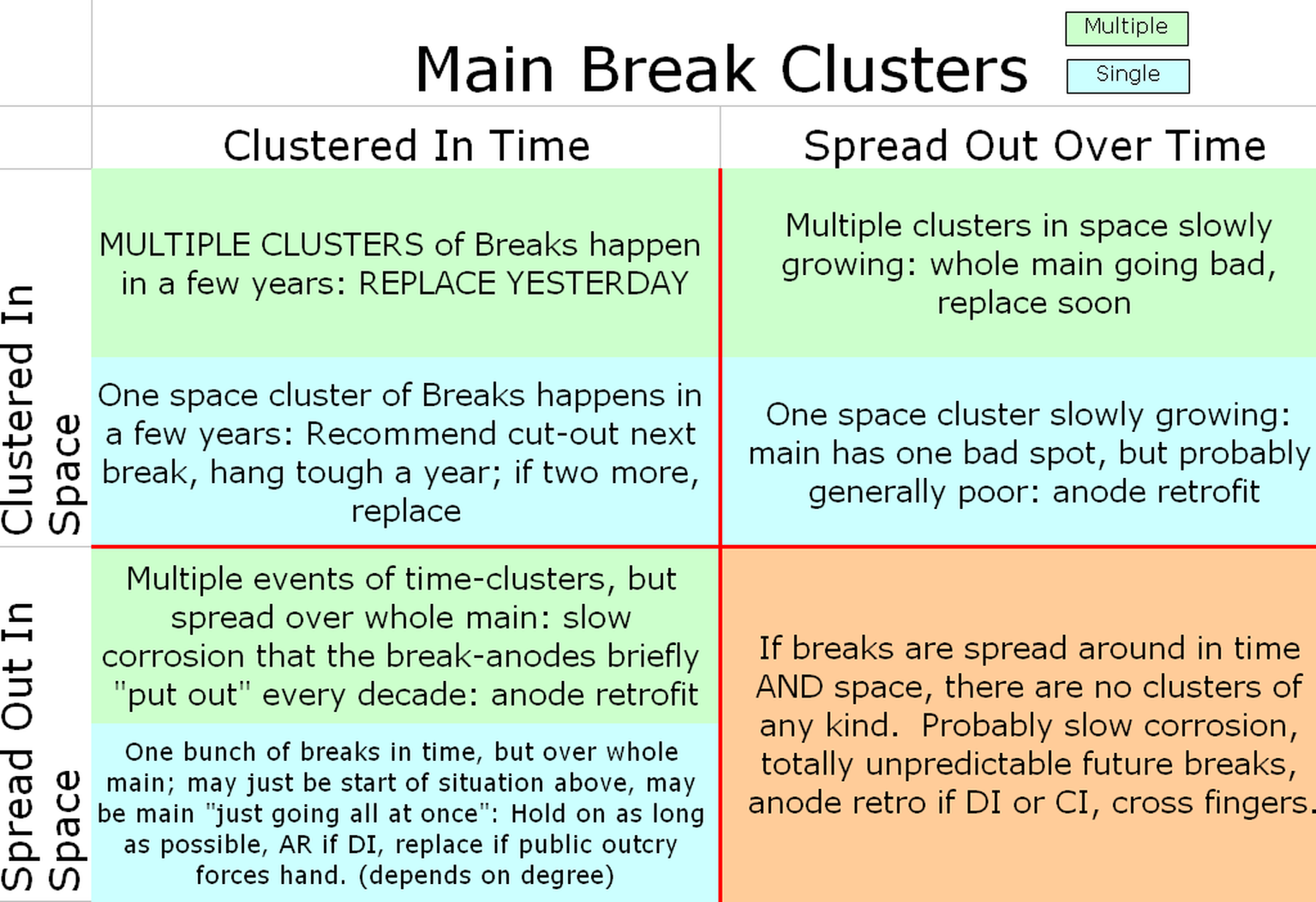


| Index & Notes |

|

Rules for Main Break Cluster Interpretation
Like most people, I worked out a system by trial and error when confronted with a complex problem, and then had the centipede's dilemma of figuring out my own thought processes when I had to teach it to young engineers taking over my job.
I got it down to a single slide that covers seven kinds of cases. It's whether main breaks are clustered or spread out, whether the clusters are in time or space or both, and whether there's just one cluster or multiple clusters. In Calgary, where the glaciers churned up the soils so that you can have corrosive soil on one block and just sand or gravel all around it, the concern is to not replace main that's fine because it happens to be next door - literally - to main that's in black dirt, and thus being eaten alive by high sulphates.
We'll go back and forth from this slide to cases from my map system. First up, if you have breaks clustered in BOTH time and space - if you have bunch of breaks suddenly happen in one spot. At top, if there's more than one space cluster going at once, the main is done for. If there's just one end of the main popping yearly, you may be able to save the rest by cutting out just around the breaks and adding anodes elsewhere.
© Roy Brander, P.Eng 2016